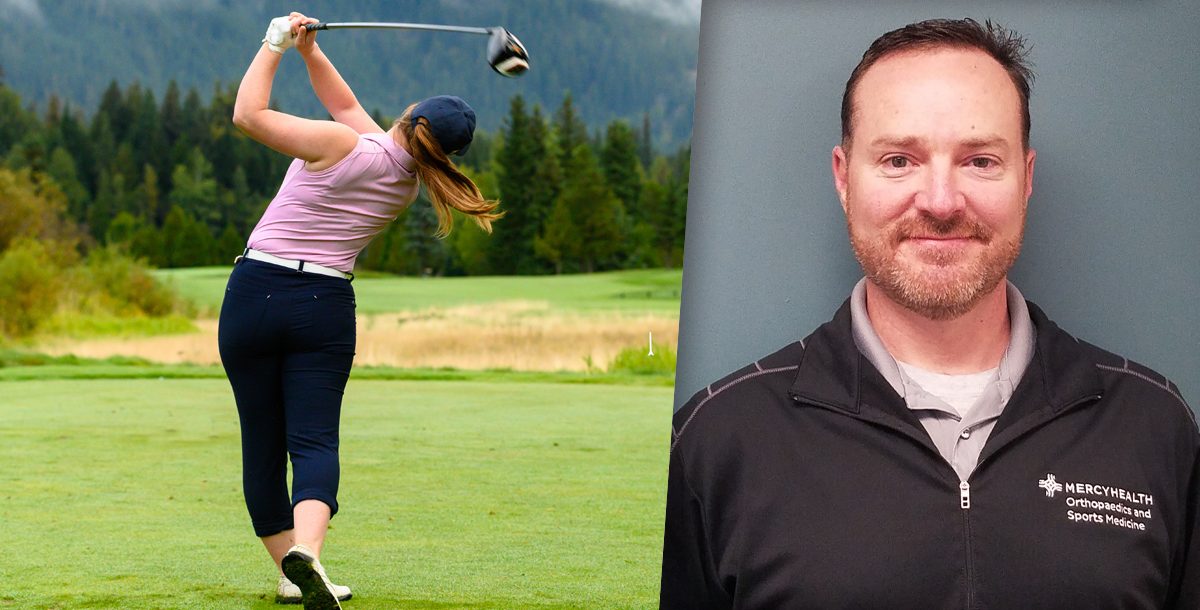Golf requires a lot of time and effort, not to mention a great deal of skill, mental fortitude and perseverance to excel at it. Additionally, the explosive nature of a golf swing can put a tremendous amount of stress on the body.
A majority of professional golfers have experienced some sort of nagging injury at one time or another in their careers. But you don’t have to be a professional to experience some of the most common golf injuries.
Luckily though, many injuries can be prevented. Michael Piscitello (pictured above, right), one of our Titleist Performance Institute-certified physical therapists sat down to give us all the details.
What are the most common golf injuries?
- Neck/low back pain
- Shoulder injuries (rotator cuff/instability)
- Tennis/golfer’s Elbow
- Tendonitis of the wrist
How do you prevent golf injuries?
“We have a specific program designed to help golfers prevent injuries,” Michael shares. “We’ve created a golf performance program, which consists of a team of clinical experts who are Titleist Performance Institute (TPI)-certified. In fact, we are the only health care provider in the Cincinnati area offering a full continuum of care of medical and fitness services.”
Our golf performance program is specifically designed to help prevent the common injuries listed above. And TPI is the world’s leading educational organization dedicated to the study of how the human body functions in relation to the golf swing.
TPI does not believe in one way to swing a club, rather in an infinite number of swing styles. However, our team does believe there is one efficient way for every player to swing and it is based on what the player can physically do.
“The most efficient swing is not the same for every golfer, because efficiency is unique to their body,” Michael explains. “To achieve an efficient swing, a golfer must first be screened. This screen involves an assessment of swing mechanics and biomechanics, physical fitness, movement quality, balance, core strength, current health and a client history.”
Once this screen is finished, the results are then used to create a plan unique for that golfer. The plan may include fitness training, physical therapy and treatment, golf specific exercises and strategies to help prevent injuries.
Basic golf safety guidelines
“Practice with purpose,” Michael shares. “Don’t expect to go out and play perfect golf unless you spend some time at the range working on your golf swing.”
Also, make sure your equipment fits you properly. If you’re unsure, be sure to see your local golf pro for advice.
“Always warm up before you play,” Michael adds. “Research has shown that golfers who warm up their body prior to hitting on the first tee, whether it’s a dynamic warm up or a resistance band warm up, resulted in a significant increase in club head speed and ball speed. You will also decrease your risk for injury if you properly warm up.”
Be aware of your posture during your swing set up. Having a proper set up will lead to an efficient swing that is repeatable.
Always drink plenty of fluids during and after your round. Staying hydrated is key to keeping your body feeling good during any athletic activity. Also, don’t forget the sunscreen.
“And, most importantly, have fun!” Michael says.
Learn more about the orthopedic services we offer in our Cincinnati market.






